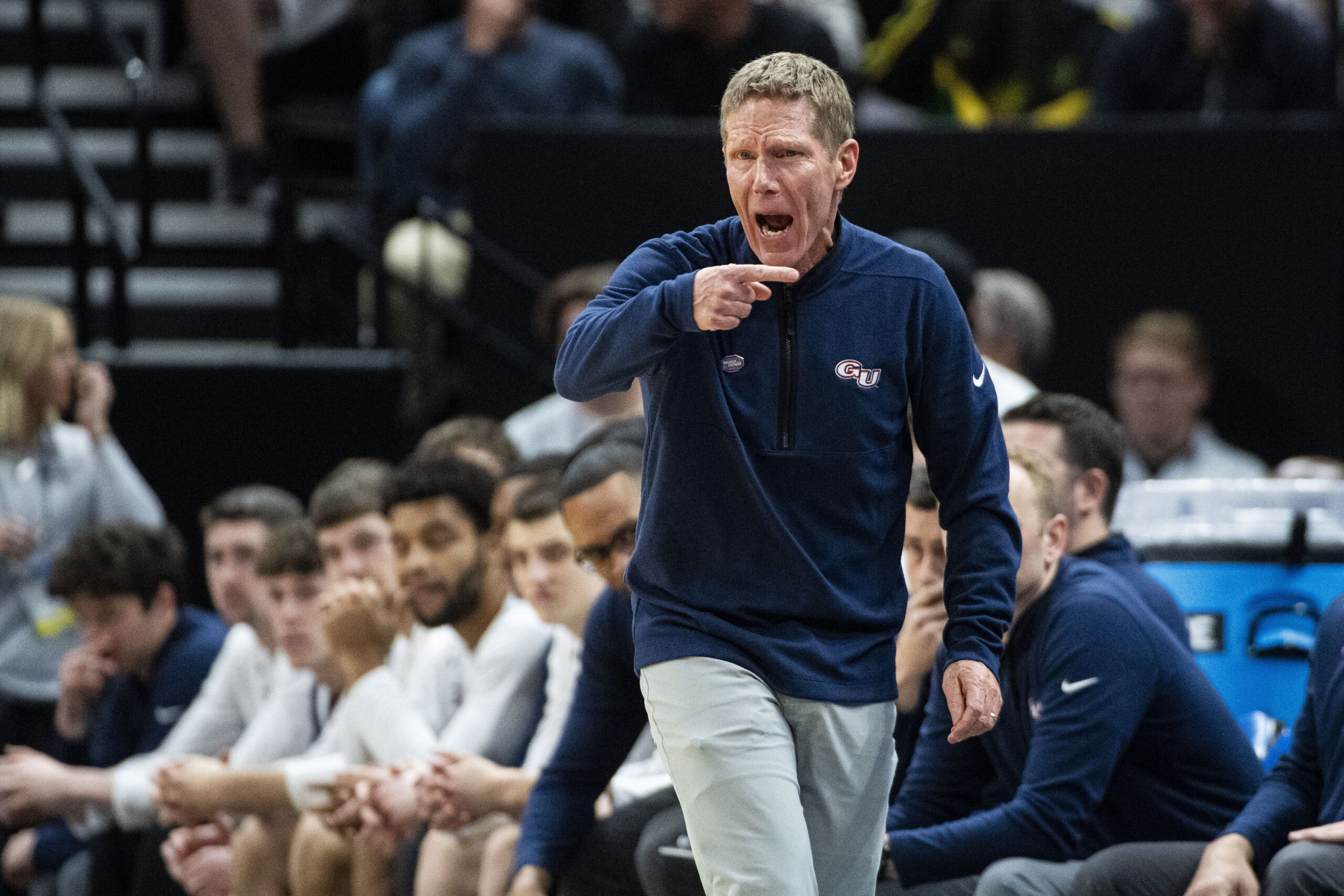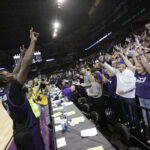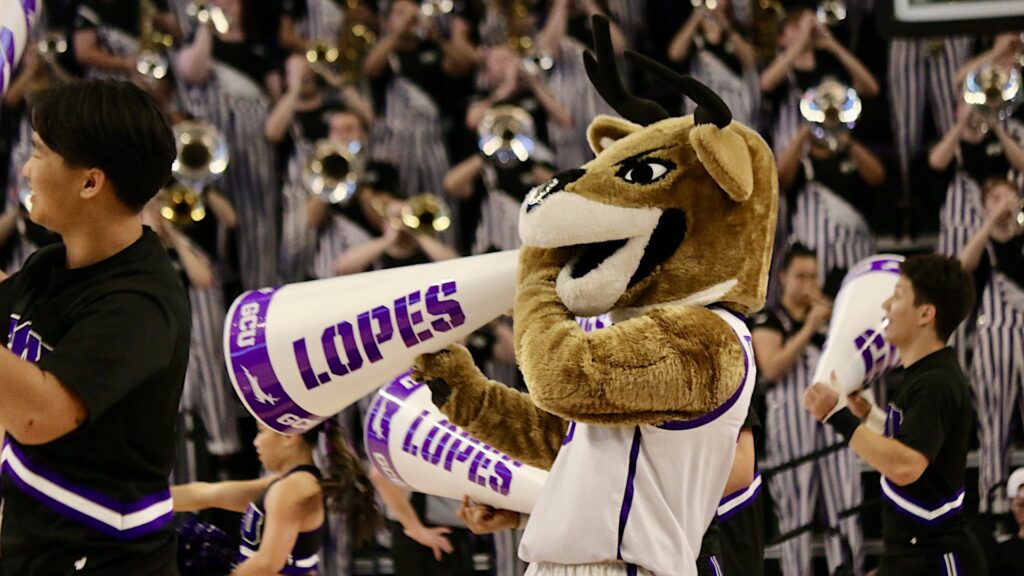The process took longer than necessary — years longer, in fact — but the West Coast Conference presidents finally recognized what their peers in the Pac-12 failed to see: The forces of conference realignment value heft and reward strength in numbers.
Size and security move in lockstep.
On Friday, the West Coast Conference announced Seattle and Grand Canyon will join the league in the summer of 2025, boosting the number of permanent members to 11.
The additions provide short-term strength and long-haul security in case of future attrition — in case Gonzaga, the WCC’s version of USC, departs for another conference.
Had the Pac-12 approved expansion in the summer of 2021, after Texas and Oklahoma announced they were leaving the Big 12 to join the SEC, the century-old conference would still exist in viable form.
Instead, the presidents took a narrow view and held with 12.
Two years later, kaboom!
The WCC learned from its neighbor’s mistake.
“The addition of Grand Canyon University and Seattle University bolsters the membership, enhances the profile of competitive excellence and expands the conference footprint into two major cities in the Western region,” WCC commissioner Stu Jackson said Friday in a statement announcing the moves.
“The WCC has a storied history of competitive prowess on the national level, and the addition of Grand Canyon and Seattle will further enrich the Conference’s national visibility.”
 The WCC did more than fortify its ranks. It added the perfect school to carry the conference banner in the event Gonzaga leaves in coming years. (More on that in a moment.)
The WCC did more than fortify its ranks. It added the perfect school to carry the conference banner in the event Gonzaga leaves in coming years. (More on that in a moment.)
Grand Canyon, which is based in Phoenix, has immense potential in men’s basketball as a private school with deep pockets, the backing of former Suns owner Jerry Colangelo and — crucially — no football program.
The Lopes, who beat Saint Mary’s in the first round of the NCAA Tournament, possess the wherewithal to attract and sign high-end talent, reach the NCAAs regularly and advance to the second weekend occasionally. (Also, their rabid fan base will energize the WCC tournament in Las Vegas.)
In our view, the Lopes have more potential than Saint Mary’s and will become Gonzaga’s primary competition for WCC supremacy the minute they join the conference.
Seattle doesn’t bring comparable competitive success but fits the WCC’s model — the Redhawks were a member of the conference in the 1970s — and purportedly is committed to upgrading its basketball program.
Expansion also benefits the WCC’s two affiliate members, Washington State and Oregon State, which are under contract for two years.
The ‘Pac-2’ schools are hoping to rebuild their former home, likely with teams from the Mountain West. But if that plan fizzles and their best basketball option is permanent WCC membership, the conference will be far more attractive with Grand Canyon involved.
In fact, the combination of Grand Canyon, Gonzaga and Saint Mary’s arguably turns the WCC into a better basketball conference than the Mountain West.
It might not be as deep, but the top will be stronger if GCU remains on its current trajectory. Instead of hoping for one at-large berth to the NCAA Tournament, the WCC will be well positioned for a second — at least while Gonzaga remains a part of the conference.
 Within nanoseconds of the WCC’s expansion news, Gonzaga’s future became a hot topic on social media.
Within nanoseconds of the WCC’s expansion news, Gonzaga’s future became a hot topic on social media.
Did the conference add GCU and Seattle now because it expects Gonzaga to leave sooner than later? After all, the school has been engaged in discussions with Big 12 commissioner Brett Yormark for months.
“This has nothing to do with Gonzaga leaving,” a source said. “Nine schools was a death knell. We were too small. It was too hard to schedule.”
Also, Gonzaga doesn’t have the necessary support on Big 12 campuses.
Despite Yormark’s ongoing pursuit — and his belief that college basketball is undervalued in the media ecosystem — the Big 12 presidents and athletic directors are wary of adding the Zags on three fronts, according to multiple industry sources:
— The media rights math doesn’t work well enough. Football is vastly more valuable to ESPN and Fox than basketball. Gonzaga would need to pay for itself and provide satisfactory additional revenue to the 16 football-playing schools.
— Big 12 officials want to assimilate Arizona, ASU, Colorado and Utah and experience life as a 16-school conference before committing to a 17th member.
— Massive economic changes coming to college sports are giving everyone pause.
The power conferences are formulating a revolutionary plan to share revenue with athletes — perhaps $20 million annually, per school — in order to settle a multi-billion dollar antitrust lawsuit.
The Big 12 is a named defendant in the lawsuit, along with the ACC, Big Ten, SEC, Pac-12 and NCAA, but the West Coast Conference is not.
Will the settlement impact schools that don’t play football? If so, to what extent?
Could Gonzaga emerge with a material advantage compared to football schools in the Big 12?
Nobody knows, but Big 12 officials are hesitant to add a basketball powerhouse before knowing how the settlement math will play out.
For those reasons, industry sources believe Gonzaga could end up joining the Big East or Mountain West.
The former doesn’t sponsor football and fits Gonzaga’s institutional model.
The latter does not fit as well, but the same realignment pressures that prompted the WCC to expand could force the Mountain West to make a move.
Commissioner Gloria Nevarez and her presidents must assess their strategic options in the wake of the WCC adding Grand Canyon and Seattle.
A reconfigured conference that includes Washington State and Oregon State — and potentially competes under the Pac-12 banner — might see value in adding Gonzaga.
This much seems clear: The WCC’s shrewd decision to invite GCU and Seattle won’t be the final move; more realignment is coming to the West Coast.
*** Send suggestions, comments and tips (confidentiality guaranteed) to pac12hotline@bayareanewsgroup.
*** Follow me on Twitter/X: @WilnerHotline
*** Pac-12 Hotline is not endorsed or sponsored by the Pac-12 Conference, and the views expressed herein do not necessarily reflect the views of the Conference.
Related posts:

AP Photo/Julie Jacobson, File)
NCAA Tournament: Our picks for all 67 games as UConn becomes one of the few repeat champions
Grand Canyon guard Tyon Grant-Foster (7) celebrates with fans after the team's win against Saint Mary's (AP Photo/Young Kwak)
Wilner – Grand Canyon upsets Saint Mary’s with dynamic display above the rim
(AP Photo/Lindsey Wasson)
Jon Wilner on Sheduer Sanders, Pac-12 QB play, Washington Dominance
Washington State quarterback Cameron Ward (1) (AP Photo/Young Kwak)
Heisman Watch: Penix on top, Ward and Nix riseJon Wilner
Jon Wilner has been covering college sports for decades and is an AP top-25 football and basketball voter as well as a Heisman Trophy voter. He was named Beat Writer of the Year in 2013 by the Football Writers Association of America for his coverage of the Pac-12, won first place for feature writing in 2016 in the Associated Press Sports Editors writing contest and is a five-time APSE honoree.

